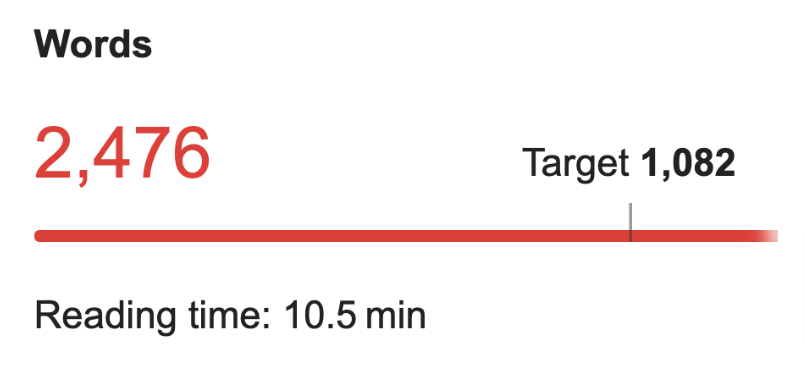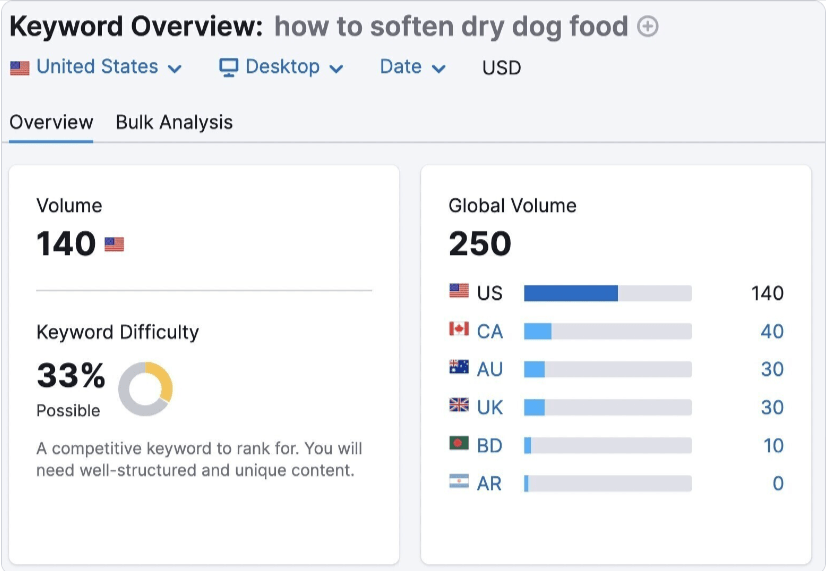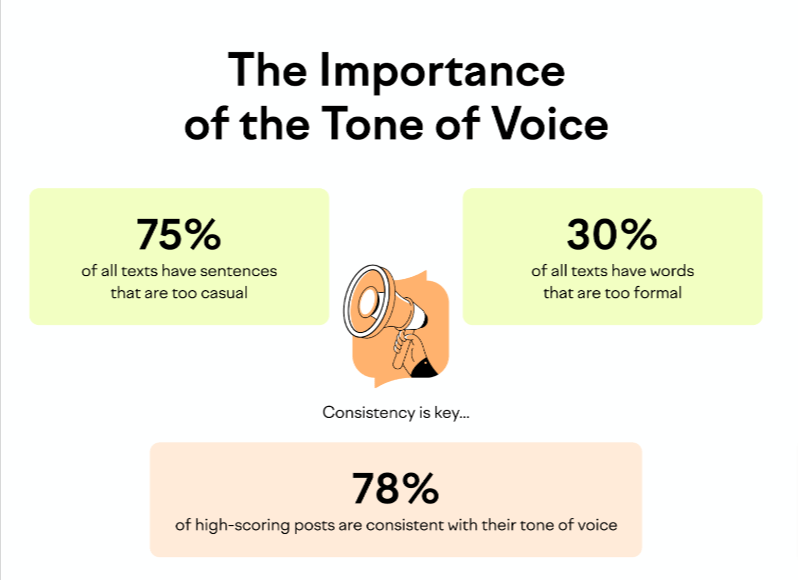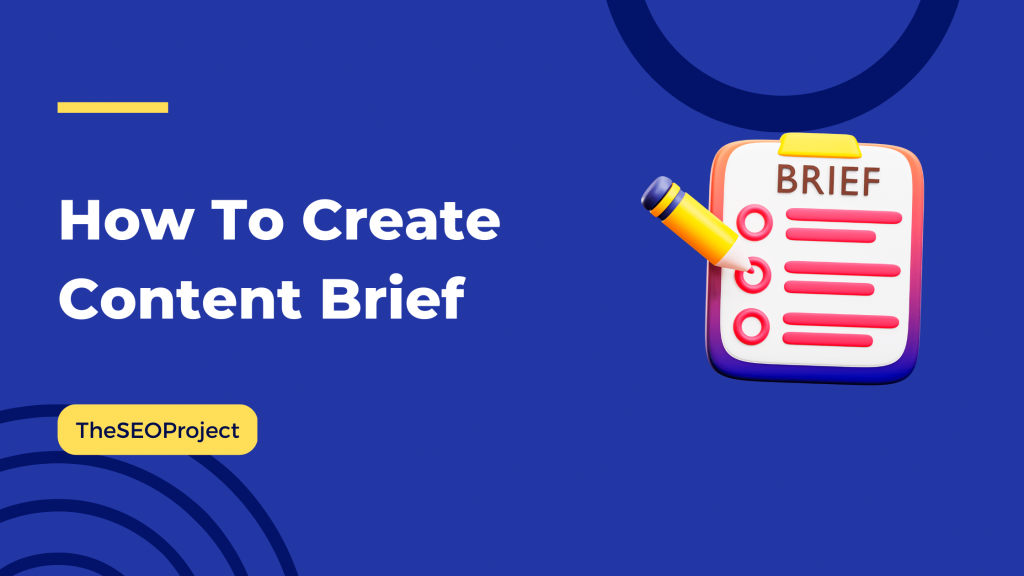Having an SEO content template for a website, blog, or even YouTube can save you tonnes of time and effort.
“Failing to plan is planning to fail. “ –
If you are to travel, you need an itinerary. Sports events need fixtures. Similarly, content needs a content brief. Because you want all your content creation to align with your brand, campaign, and bandwidth. Without it, you risk creating something that will trigger a barrage of back and forth between stakeholders. Worse, you lose time, money, and SEO ranking!
Clearly, having a content brief is a must whether you are creating content for a website, social media, or YouTube. Further, having an SEO content brief template expedites the entire process of content creation from ideation to going live.
In this guide, we are going to take you through the essentials of creating an SEO content brief step-by-step. We’ll also present you with some brief content examples, tips, and generators. But first, let’s break down the meaning of the content brief.
Steps To Create Content Brief
As we take you through the process of creating an SEO content brief stepwise, we’ll take the example of how this very guide was created using a content brief.
- Define the audience and objective
The first step of content brief creation involves identifying the target audience for the content and defining the objective or goal of the content. It’s recommended that one content focuses on only one message.
This helps ensure that the content is relevant, consumable, and valuable to the intended audience.
Example: For this guide, our audience is someone who already understands SEO basics and is looking to create their own blog or for a client.
- Determine the content format and word count
Factor bandwidth, campaign, and accessibility, to decide on the format of content that will be created. It can be an article, listicle, PPT, infographic, video, etc. Further, determine the word count or length of the content.

Example: Our research (and experience) tell that those looking to understand content brief would rather want to read than watch a video. The decent length for a guide in this domain of SEO tutorial is ~2000 words. Also, given our bandwidth and platform, creating a blog is more convenient than video creation.
- Identify target keywords and topics
Identify the target keywords and topics for the content. For an SEO content brief, it’s the key to optimizing content for search engines so that it reaches its target audience.

You can use Semrush Keyword Magic Tool to extract a list of keywords within seconds!
Example: We used Semrush, Google Keyword Planner, and Google auto-suggest to come up with keywords. Our keywords for this guide are:
- content brief
- content brief template
- content brief examples
- seo content brief
- seo content brief template
- content brief generator
- Ascertain resources and notes
Gather all the relevant information, resources, and notes that will be used to create the content. This could include research articles, interviews, surveys, or other sources of information.
You can find these by simply typing your keyword on Google. It’ll give you a list of best-performing content, FAQs, and ideas as well.
Example: We listed and sifted through at all the competitors (whether blog or video) in the first and second SERP for our target keywords before writing this guide to understand what everyone is talking about and what are they missing (that we can add). The FAQs at the end of this guide come from Google’s People Also Ask.
- Outline the content structure
Analyze your notes and references to see what others are talking about. It’ll give you an idea of not just talking points but also flow and what to skip. Using this, create a rough outline of the content structure, including headings, subheadings, and sections.
Do ensure adding unique pointers, having a logical flow, and setting the tone of the content.
Example: Our content outline included not just the headers but also a one-liner idea for each section. Note that before finalizing this outline, it went through a couple of rounds of revisions by the content manager.
- Set the tone and style
In addition to the content outlining, what will set the tone of the content is the actual writing. Do you want to sound formal or informal? Want your content to be explanatory or persuasive? These days some content even uses slang and emojis!

You should mention these intangible communication elements in your content brief as well.
Example: As you must have noticed, we want to sound informal but not casual. We are using SEO jargon but not slang. It was all decided beforehand.
- Suggest rich media
Rich media not only enhances user experience but also increases average session duration. SO, suggest the use and placements of images, videos, infographics, etc. You can also explore integrating widgets to make the content even more engaging.
Example: The infographic in the section ‘Sample SEO content brief template’ was mentioned in the outline itself. It allowed the content manager to delegate the requirement to the graphics team at the same time the writer (myself) was asked to write the guide.
- Include FAQs and interlinks
Include frequently asked questions (FAQs) towards the end of the content. It could come from putting yourself in the user’s shoes, by research you did initially, and also by looking at GSC queries of similar web pages.
Targeted interlinks are also advised to be added beforehand so that they make their way into the content organically.
Example: As mentioned earlier, during the note-taking process itself, we had asked our SEO personnel to suggest FAQs or long-phrase keywords – that we put at the bottom of the guide. Most of the links – whether internal or external – were kept in mind while deciding the topic and outline.
- Specify the visual elements
A lot of SEO has to do with user experience. This is usually one time task so it makes sense to put thought into the look and feel of the design as well. Mention font, colors, layout, etc.
It’ll ensure that content is not only engaging to read but also visually appealing and consistent as well.
Example: The layout, font style, color, etc. are part of the global setting that was put in place when deciding on our website brand guideline itself. However, in terms of layout, that was also fixed when deciding on the blog theme.
- End with a CTA
Last but not least, you want to reward your reader for reading (or even skimming) through your content to the end. So, end it with a Call-to-Action (CTA). As per your campaign goals, encourage the reader to check out a product, subscribe to a newsletter, or contact the company. This helps convert readers into customers. Isn’t it what you are writing your content in the first place?
Example: The CTA of this guide is to ask you to bookmark this site as we want to help you out with more guides on SEOs. You’ll also notice some external links in various sections of this guide – that is also as per the CTA planned.
Tips to Create a Good Content Brief
Below we have listed some expert tips to create an error-free content brief:
Mind the SEO
This is obvious. Yet, deserves to be emphasized. Keep SEO in mind while creating the SEO content brief. And it’s important to do it from the get-go because SEO needs to be baked from the beginning; it doesn’t work as a topping.
Lock deadline
As your content is a subjective piece, it’s common to get lost in the loop of revisions. So, set a clear and realistic deadline for the content creation process. It is especially critical when dealing with time-sensitive content pieces like topical or trending ones.
Stay within budget
Everything has a cost limit. Your content creation may include a budget for the writer, designer, SEO, publisher, etc. So, know your budget and allocate it considering the quality, quantity, and quickness expected of your content production.
Include content success metrics
Determine how the success of the content will be measured – ranking, CTR, sessions, etc.
This will act as a navigator to evaluate the quality of the content and effectiveness of content strategy as well. If content does not perform as expected, trace back its root causes and twerk the content brief template itself.
Fix communication gaps
Make it clear to all stakeholders in content creation that in case of confusion or conflict, refer to the content brief. This should act as a single source of truth. It will prevent miscommunications and get everyone on the same page.
Sample SEO content brief template
Refer to the image above for creating your SEO content brief template.
<image>
You can also download free content brief templates from Semrush.
Content Brief vs Creative Brief
A lot has been said about content briefs in this guide and we hope it helps you create your own. But one might wonder, “Is a content brief the same as a creative brief?” Appears so from the inclusion of elements like tone, visuals, layout, etc., right?
Well, it differs somewhat.
While a content brief does include some creative guidelines, it is limited to specific written content. A creative brief covers far broader collaterals like ad campaigns, design projects, web development, etc. It’s primarily focused on ensuring that the content is aligned with the brand’s overall messaging and identity.
Both documents – creative and content brief – are important for ensuring that the content is high-quality and effective, and they should be used together to guide the content creation process.
Manual vs. AI Content Brief Generator
AI is taking over.
Ok, that’s a cheeky overstatement but what’s unavoidable is the advent of AI Content Brief Generator. There are already some out in the market.
So, should you stick with your intuition and experience to create a successful content brief or rely upon AI that uses data analysis to generate one?
Creating content briefs manually is preferred for a hands-on approach. You have complete control over the content brief creation process. It also helps if you have specific requirements that are not easily captured by an automated tool.
On the other hand, an AI content brief generator can save time and effort by automating the audit and providing suggestions based on data analysis. It can also help you generate more diverse and creative ideas.
So ultimately, deciding between a manual content brief generation and an AI-powered one depends on your specific needs, preferences, and budget.
Related Read:
Key Takeaways: Creating Outlines Like A Right Way!
There you go with all you need to know about creating your SEO content brief. However, we’ve seen that presented with a rule, things become stringent. And in the case of creative tasks like writing, it may dethrone the king that is content!
So, while you pass on your well-meaning content brief to the writers, do remind them that using a content brief doesn’t mean they can’t be creative. A content brief is more of a guide than rules that must be followed. Give them the liberty to channel their creativity in the direction of your content brief. And see your content strategy succeed!
To get more on content strategy, SEO, and creation, explore our other blogs and bookmark us.
FAQs
A good content brief is a detailed document outlining the goals, target audience, key messaging, keywords, and other relevant information for creating effective content.
A content brief template is a pre-made document that provides a structure and framework for creating a content brief. You can create on template content brief and reference it for providing a content brief for multiple contents.
To create a content brief for SEO, identify relevant keywords, analyze competitor content, define the content format, and write as per SEO best practices. You should also establish clear SEO metrics for content performance tracking. Use Semrush SEO Writing Assistant for real-time content optimization suggestions.
To write a content brief for a website, consider the website’s purpose, user persona, audit competitor content, and key SEO factors.
Yes, ChatGPT can help you create an SEO content brief by providing suggestions based on best practices and data analysis. However, as it’s only an AI language model, it’s recommended to consult a professional SEO content strategist as well.


